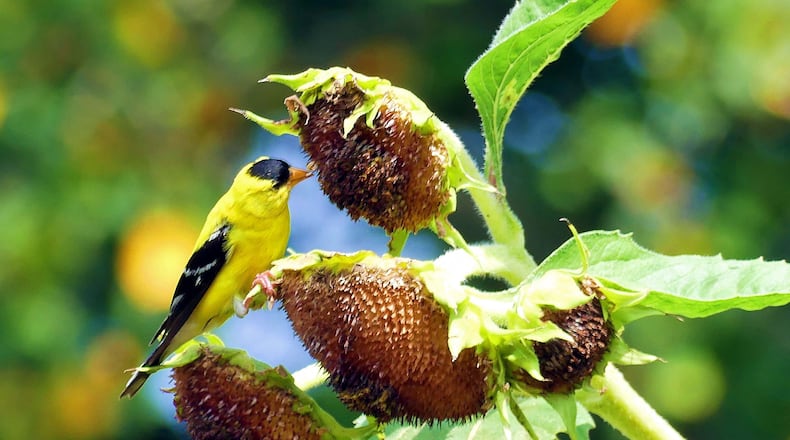Their nesting seasons over, ruby-throated hummingbirds, purple martins, orchard orioles and several other migratory songbirds in Georgia already are embarking on their fall journeys to winter homes in Latin America.
Still nesting are several of Georgia’s year-round birds — cardinals, bluebirds, robins and others — that don’t migrate. They’re rearing their second or third, perhaps even fourth, broods of the year.
A remarkable exception is the American goldfinch. Known for the males’ bright yellow breeding plumage, goldfinches don’t begin nesting until late June; peak nesting is in late July and the first half of August. It makes the cheery little goldfinch the last songbird to nest in Georgia each year.
The delay may be due to another goldfinch peculiarity — a diet almost entirely of seeds. Ornithologists believe that the bird’s late nesting is timed to late-summer seed ripening, when abundant grass and flower seeds are available.
Most other songbirds feed their nestlings protein-rich insects for rapid growth, but goldfinch parents nourish their babies — and themselves — with seeds only.
In one respect, a seed-only diet has a big benefit — it makes goldfinch nests less vulnerable to cowbird parasitism. Cowbirds are major threats to many songbird species because the cowbirds lay their eggs in the other birds’ nests. When the larger cowbird chicks hatch, they may eat all the food at the expense of other chicks in the nest.
Cowbird babies, however, need to eat insects, and can’t survive on the goldfinch’s seed diet.
Goldfinches are especially fond of thistles, not only for the seeds but also for the fluffy down of thistle flowers that the birds use to line their nests. Females build tightly woven, cup-shaped nests of grasses, weed stems, spiderwebs and other material in weedy fields or open, shrubby woodlands — mostly north of the Fall Line. Four to six pale blue eggs are laid and incubated for 12-14 days.
IN THE SKY: From David Dundee, Tellus Science Museum astronomer: The South Delta Aquariid meteor shower will be visible this weekend through Wednesday night, producing about 15 meteors per hour — in the southeast after dark. The moon is last quarter Saturday night. Mercury is low in the west around dusk. Mars and Jupiter are in the east a few hours before sunrise. Saturn rises in the east just before midnight.
Charles Seabrook can be reached at charles.seabrook@yahoo.com.
About the Author
Keep Reading
The Latest
Featured


